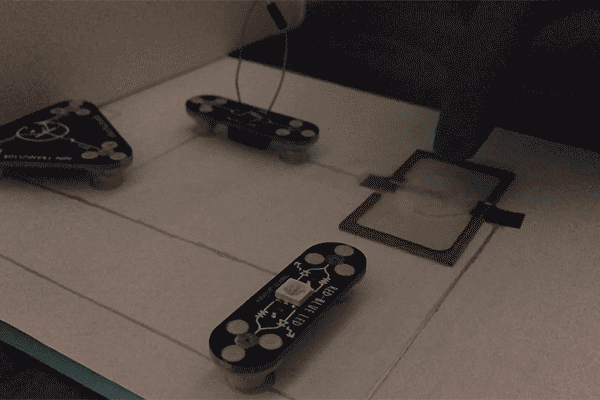Bacteria Can Be Programmed to Assemble Structures from Gold Particles
This work is proof "of the ability to grow a functional device starting from a single cell," said study senior author Lingchong You, a synthetic biologist at Duke University in Durham, North Carolina. "This process is analogous to programming a cell to grow an entire tree."
Nature is full of examples in which living things create structures by combining organic and inorganic materials. For instance, mollusks grow shells and humans grow bones by weaving calcium-based molecules with organic components. [Magnificent Microphotography: 50 Tiny Wonders]
The ability to use bacteria to fabricate devices could have many advantages over current manufacturing processes, You and his colleagues said. For instance, biological fabrication uses raw materials and energy very efficiently and is typically environmentally friendly, they said.
Previous research successfully used bacteria to assemble devices that incorporated metallic components and other inorganic parts. In a 2014 study published in the journal Nature Materials, scientists at MIT and their colleagues wove bacteria and inorganic components, such as gold particles and microscopic crystals, into hybrid materials that could emit light or conduct electricity.
However, in that 2014 study, the bacteria still needed outside coaxing in order to assemble structures. Now, scientists have figured out a way to genetically program bacteria so they manufacture devices on their own.
The new study's researchers incorporated a series of synthetic genes into E. coli, a microbe that's common in the human gut. These genes worked together a bit like the components of an electronic circuit to carry out a set of biological instructions.

Colonies of the bacteria grew into dome-like structures. The researchers could alter the size and shape of the colonies by controlling the properties of the porous membranes they grew on. For instance, changing the size of the pores or how much the membranes repelled water influenced how many nutrients could reach the microbes and thus alter their growth pattern, according to the study.
Sign up for the Live Science daily newsletter now
Get the world’s most fascinating discoveries delivered straight to your inbox.
The gene circuit in the bacteria also had the microbes generate a protein that latched onto specific inorganic compounds — in this case, microscopic gold particles. This caused the bacteria to create golden shells about the size of an average freckle, the researchers said.
These golden shells could be used as pressure sensors, according to the scientists. The researchers used copper wires to connect golden domes with LEDs. When pressure was applied to a dome, that deformation increased its electrical conductivity, leading the LED connected to it to brighten a certain amount depending on the amount of pressure applied.
"To me, the most surprising and exciting part of the research was that the pressure sensor worked so well," You said. "When we first came up with the simple design, we thought the structures would be too fragile, such that the whole device could collapse after a single push. Yet it turned out that the composite structures were quite resilient. The pressure sensor worked upon many rounds of pressing."
The researchers stressed that they could potentially manufacture far more than just pressure sensors with bacteria. "We could use biologically responsive materials to create living circuits," study lead author Will (Yangxiaolu) Cao, a postdoctoral researcher at Duke University, said in a statement. "Or, if we could keep the bacteria alive, you could imagine making materials that could heal themselves and respond to environmental changes."
The researchers cautioned that biofabrication by genetically modified cells is in its infancy. "The process is certainly tedious and requires tremendous technical know-how, and the resulting pressure sensor would be cumbersome in comparison to commercially available ones," You said.
Still, "what the work demonstrates is a fundamentally new approach to assemble structured materials," You said. This strategy has the potential to assemble materials that can respond to multiple signals, "adapt to the environment, and self-heal, much like materials assembled by biological organisms in nature — for example, teeth, bones."
Future research will aim to use bacteria to fabricate more diverse structures, You said. Heand his colleagues detailed their findings online today (Oct. 9) in the journal Nature Biotechnology.
Original article on Live Science.












